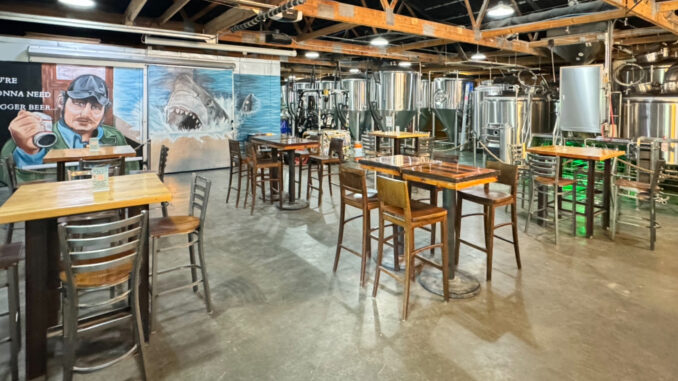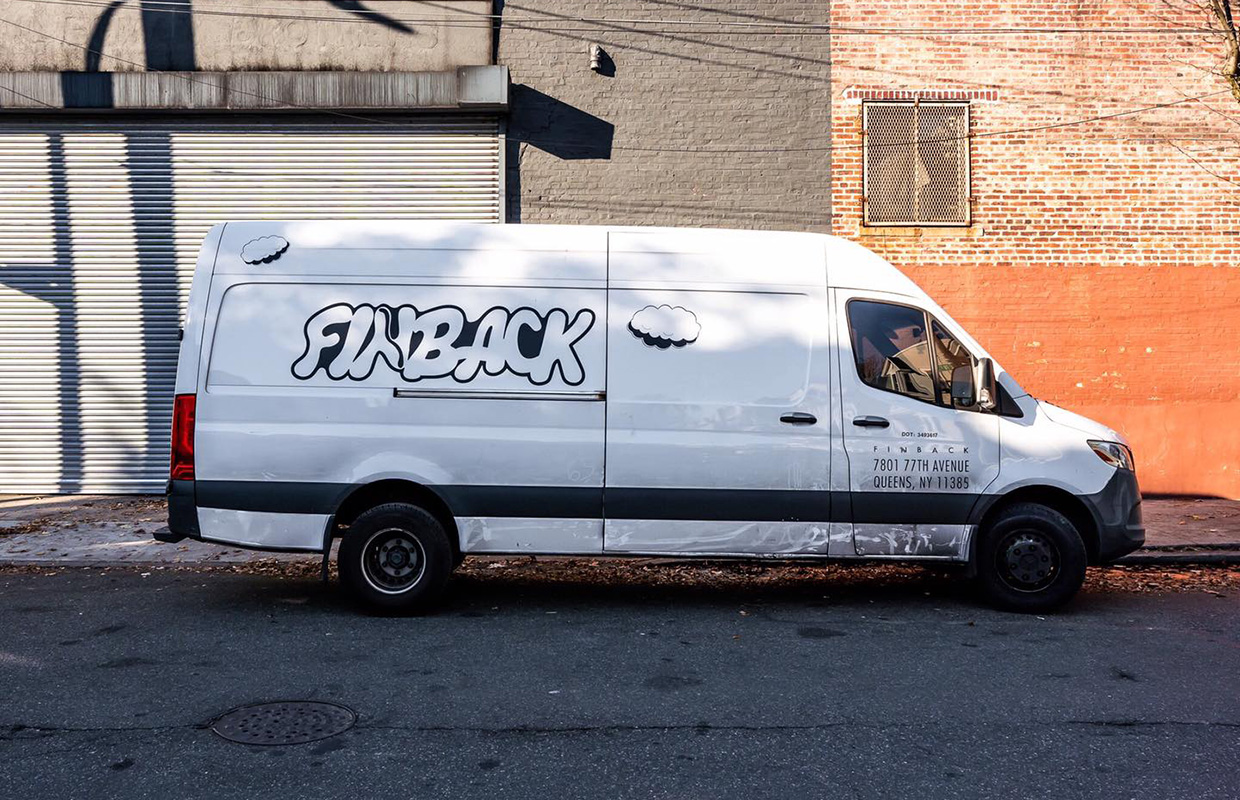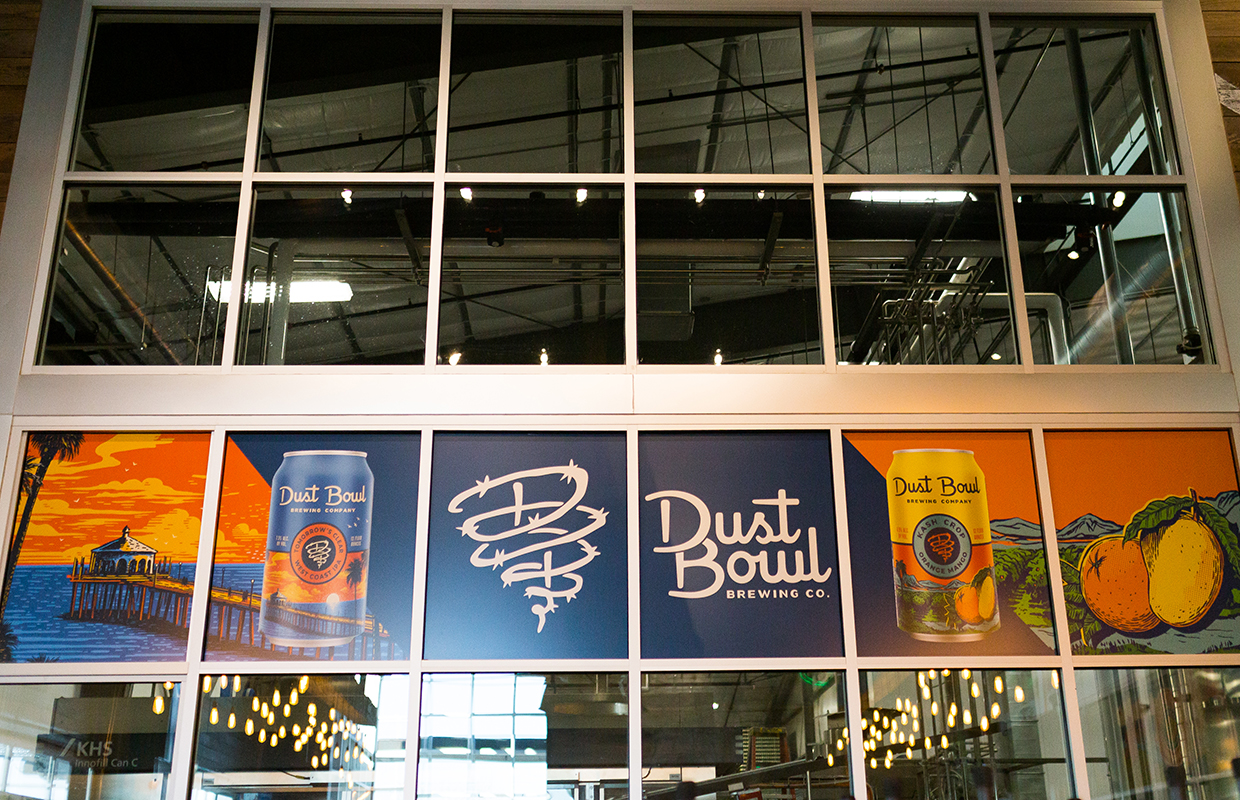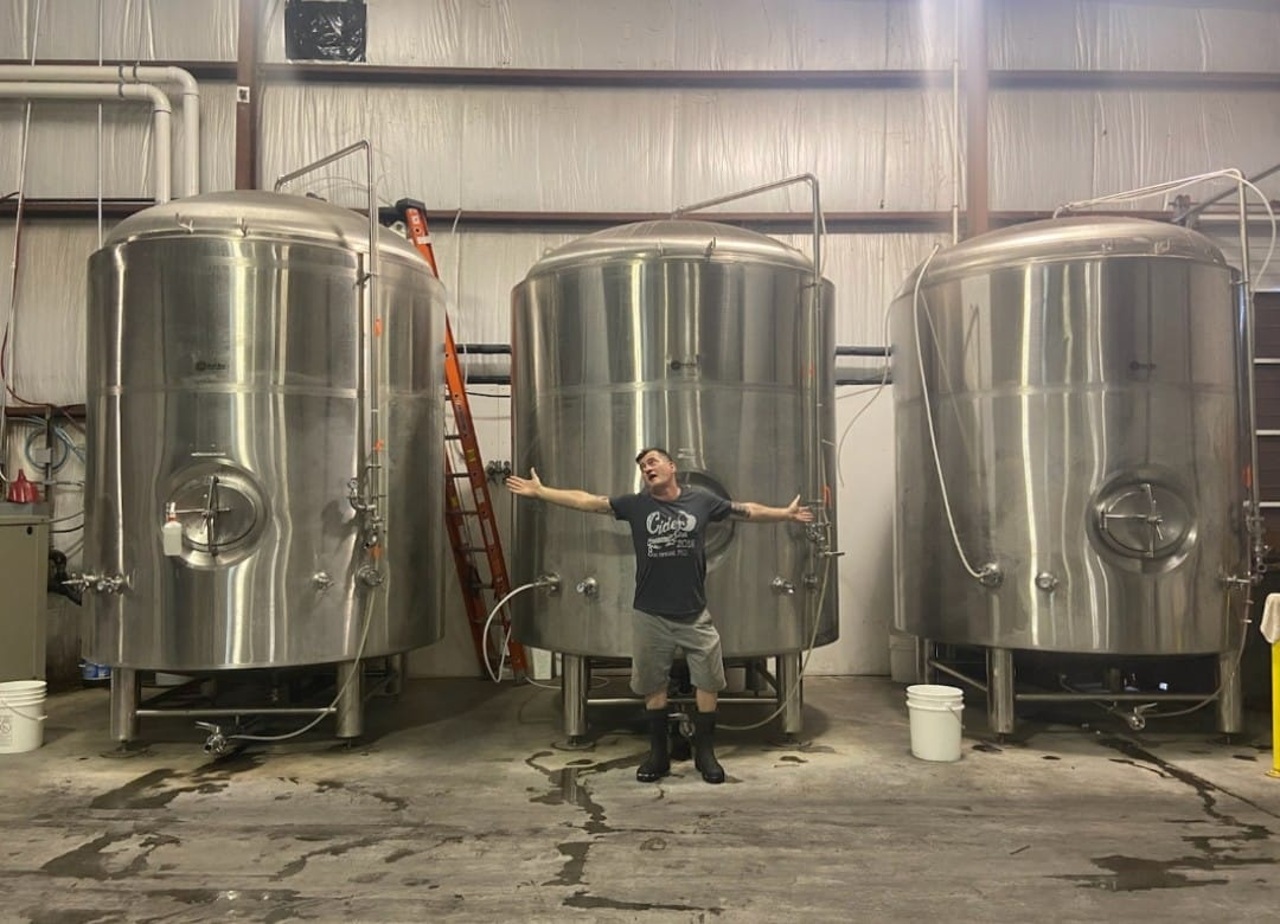
Creating that meaningful and lasting taproom experience to a consumer to encourage repeatability is about more than pouring a great pint of beer — it’s also about imprinting impressions, building a community inside your space, and making someone feel at home. For many, your taproom is the heart of your brand and many are always looking to reimagine their spaces and add in strategies to improve customer engagement, flow, and satisfaction.
For Low Tide Brewing, Taproom Operations Manager Allison Havens told Brewer the front-of-house team’s ideal experience means it’s a “welcoming, engaging, and comfortable (experience) for all guests.”
Havens explained that the South Carolina-based brewery has looked to create a relaxed, coastal atmosphere with a focus on hospitality,
“We are always updating our taproom layout to improve customer flow,” she said. “That includes optimizing seating arrangements for better group accommodations and enhancing signage for clearer navigation.”
Tom Paynter from No Label Brewing said that creating connection is at the center of the guest experience for the Katy, Texas brand.
“The ideal taproom experience is all about connection. It’s not just a place to grab a beer — it’s a place where people feel like they belong,” he said. “We focus on comfort, variety, and personality.”
Recent enhancements include more communal seating, added indoor air conditioning, and an ongoing rotation of unexpected activities — like having a kangaroo petting zoo on Sundays — to keep visitors coming back.
“The goal is to keep things casual, welcoming, and just the right amount of unexpected,” Paynter said.
Roosters B Street Taproom Manager Braden Anguiano emphasizes diversity in seating to match varied guest preferences, which was something that the Utah-based company saw a need for.
“Whether you want to drink quietly in peace or laugh loudly with newfound friends, our taproom is designed to accommodate all experiences,” he said. “Our long communal tables bring people together and encourage conversation and our dog friendly patio is a perfect place to enjoy a beer in the sun.
“Smaller tables on the perimeter allow for personal space and quiet conversations, while patrons who prefer to “belly-up” to the bar often find themselves conversing with their neighbor or the bartender.”
Designing for Flexibility and Flow
Thoughtful layout design plays a critical role in maximizing both customer comfort and operational efficiency. Erin Bishop, the co-founder and CEO for Thirsty Buffalo Brewing Company, made targeted changes to traffic patterns in their taproom to reduce crowding and better serve a mix of new craft drinkers and seasoned beer fans.
“We also regularly make adjustments based on customer feedback to keep the space comfortable and engaging,” Bishop said.
Wynkoop Brewing Head Brewer Kat Hess tackled a more subtle but impactful change — overhauling beer menus to improve clarity and user experience, especially when it comes to the important part of a beer.
“We have changed our beer menus (printed and online) to make it easier for guests to find the style of beer they want,” she said.
The key elements include a warm and welcoming atmosphere, easy to read/understand beer menus, and knowledgeable staff, Hess pointed out.
“I want every person that comes in to feel welcome and my staff to feel they have the answers to just about any beer question that may arise,” she said.
Gathering Feedback, Building Loyalty
It was agreed by many that consistent, two-way communication with customers is essential. For many, it starts with their front-line staff.
“We find that the best way to collect feedback is to maintain an open dialogue with the customers,” Anguiano said. “By developing relationships with our guests, we cultivate an environment where they feel comfortable expressing their needs.”
That feedback can lead to anything from a beer becoming a seasonal staple to adding a new food item.
Havens said customer feedback at Low Tide comes from multiple sources.
“Beertender conversations, online reviews, Untappd ratings, and post-event surveys,” they said. “We take all feedback seriously — if immediate action is needed, we address it right away.”
For Thirsty Buffalo, feedback is deeply embedded in decision-making.
“We pay close attention to online reviews and direct messages,” Bishop said.
In the taproom, they encourage open dialogue with guests through face-to-face conversations from the staff and they said they find importance through social media engagement.
“We also pay close attention to online reviews and direct messages, as they often reveal patterns in what customers are loving or what could use improvement,” Bishop added. For beer specifically, Bishop said they monitor how new releases are received through sales data, taproom polls, and customer tasting notes.
READ MORE: Brewery Tours: How To Improve Customer Experience
“That feedback plays a big role in guiding future brews and seasonal rotations,” she said. “At the end of the day, we are a community-focused brewery, and listening to our guests ensures we continue to create a space and product they are excited to come back to.”
Leveraging Technology to Support Hospitality
Behind the scenes, smart tech choices have helped in providing faster and more seamless service.
Bishop’s team uses their POS system to track customer preferences, manage tabs efficiently, and offer loyalty rewards. She also employs QR code menus and real-time digital signage for beer lists and event updates, ensuring that guests are always in the know.
Similarly, Havens said that Low Tide recently upgraded to a more efficient POS system.
“It allows for faster service, improved reporting, and features like round-up donations and a loyalty program,” she said. Untappd integration keeps the Low Tide beer menu updated in real-time, ensuring customers always know what’s available while Havens added they keep the audience engaged with timely updates on beer releases, events, and promotions through social media and email marketing.
“By merging technology with hospitality, we make it easy for customers to interact with our brand while ensuring an efficient and enjoyable taproom experience,” Havens said, adding future plans consist of a custom mobile app.
Roosters sees real-time QR updates and mobile POS tools as key speed factors.
“With our selection of beer constantly changing and evolving, we find that QR menus are the easiest way to keep our menus up to date and allow us to make instantaneous changes and updates, even in the middle of the day,” Anguiano said. “Our mobile POS systems also allow us to have some of the fastest drink service in the state. Customers often find their drinks delivered to the table even before they have finished ordering. It also speeds up the checkout process and allows our customers to be in as much or as little of a hurry as they please.”
Even for more traditional operations like Wynkoop, Hess finds value in digital analytics.
“I like to say we’re rather old school in that we have printed menus for all of our food and beer options,” she said. “Though our guests don’t see much of the POS system we use, the reporting makes it easy for me to track trends in sales.” “That helps me make sure I’m offering what our guests are looking for.”






Be the first to comment